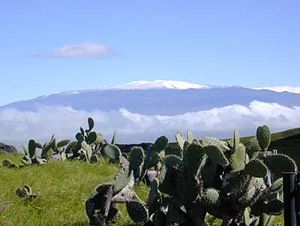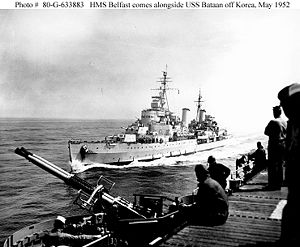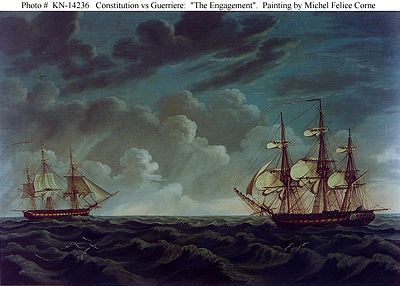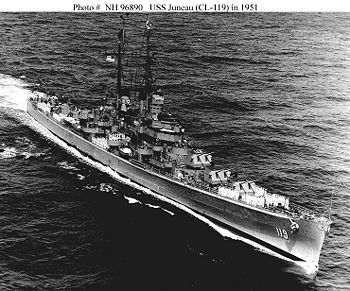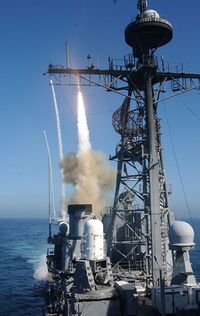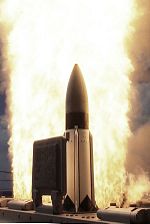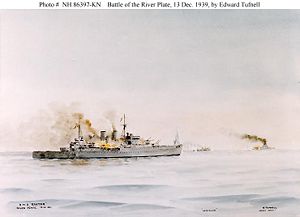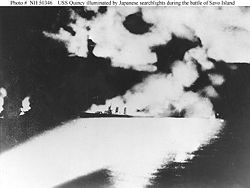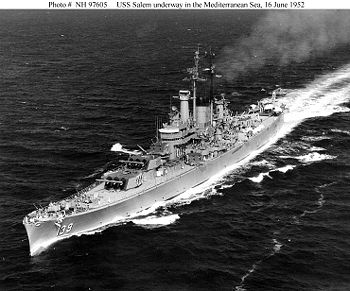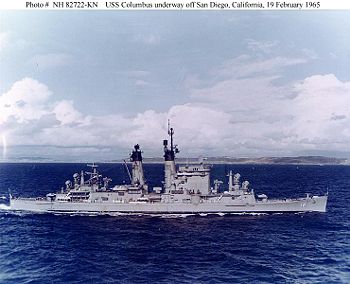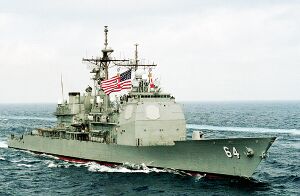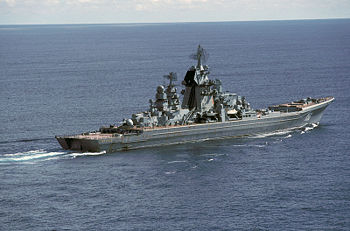Archive:Article of the Week
The Article of the Week is an article chosen by vote among Citizens as exemplifying various qualities we like to see in a Citizendium article; see our article standards.
Add New Nominees Here
To add a new nominee or vote for an existing nominee, click edit for this section and follow the instructions
| Nominated article | Supporters | Specialist supporters | Score |
|---|---|---|---|
| Drew R. Smith, Joe Quick | 2 | ||
| Meg Ireland | Alexander Wiebel | 3 |
Transclusion of the above nominees (to be done by an Administrator)
- Transclude each of the nominees in the above "Table of Nominees" as per the instructions at Template:Featured Article Candidate.
- Then add the transcluded article to the list in the next section below, using the {{Featured Article Candidate}} template.
View Current Transcluded Nominees (after they have been transcluded by an Administrator)
The next article (or draft) of the week will be the article with the most votes at 1 AM UTC on Thursday, 13 August 2009. The honors were done this time by Milton Beychok 02:19, 6 August 2009 (UTC)
Text in this section is transcluded from the respective Citizendium entries and may change when these are edited.
| Nominated article | Supporters | Specialist supporters | Score | |||||||||||||||||||||||
|---|---|---|---|---|---|---|---|---|---|---|---|---|---|---|---|---|---|---|---|---|---|---|---|---|---|---|
Mauna Kea is a dormant volcano in the U.S. state of Hawaii (U.S. state), one of five volcanoes which together form the island of Hawaiʻi. Mauna kea means "white mountain" in the Hawaiʻian language, a reference to its summit being regularly covered by snow in winter. The peak of Mauna Kea is 13,796 ft (4205 m) above sea level but about 33,000 ft (10000 m) above its base on the floor of the Pacific Ocean. It is the world's tallest mountain by this measure, taller than Mount Everest, which is the highest mountain above sea level. Pu`u Wēkiu is the highest of the numerous cinder cones on the summit plateau. It is also the highest point in the state. Mauna Kea can be reached via the Saddle Road. Physical ResourcesMauna Kea stands approximately 13,796 ft (4205 m), or 33,000 ft (10000 m) from the ocean floor. Three cinder cones (pu`u) make up the summit of Mauna Kea (Pu`u Hau`oki, Pu`u Wēkiu, Pu`u Haukea), collectively referred to as Pu`u o Kūkahau`ula. Mauna Kea is the highest point in the Pacific Basin and the highest island-mountain in the world. Mauna Kea was listed as a National Natural Landmark in 1972. There is also evidence of glaciers that covered nearly 27-square miles of the summit region during the Pleistocene Epoch (Ice Ages) approximately 18,000 years ago. GeologyMagma pushed up through the oceanic crust began building Mauna Kea approximately 750,000 years ago. Throughout its building stages, lava flowed from three main rift zones, forming a volcano resembling a warrior's shield. At the end of the shield stage eruptions became more explosive, discharging magma referred to as tephra. These eruptions created the numerous cinder cones dotted across the highest elevations of Mauna Kea. During the Pleistocene Epoch (Ice Ages) the summit region of Mauna Kea, was covered with glaciers. It is believed that melting of the glaciers was the first source of water for Lake Waiau. ClimateAbove 7,000 ft (2100 m), the upper slopes and summit region of Mauna Kea are classified as high alpine desert, above the trade wind inversion, where the air is dry and cool. During winter months (November-April) low-pressure systems tend to inhibit formation of the inversion layer, permitting increased precipitation, including snowfall at the summit. Annual precipitation ranges from 7-18 inches (18-46 cm) in the summit area to 12-20 inches (30-51 cm) at Hale Pōhaku. Flora and FaunaMauna Kea can generally be divided into two ecosystems; the subalpine ecosystem, which is at 5,600 ft (1700 m) to 9,500 ft (2900 m), and the alpine ecosystem, which is occurs above 9,500 ft (2900 m). Hale Pōhaku occurs in the upper reaches of the subalpine ecosystem, while the Mauna Kea Science Reserve occurs in the alpine ecosystem. Subalpine Flora and Fauna (Hale Pōhaku and Access Road)The subalpine pant life consists of māmane forests and understory plants including; alpine hairgrass, pili uka, `āheahea, pūkiawe, nohoanu, kalamoho, `iwa`iwa, olali`i, littleleaf stenogyne, and mā`ohi`ohi. Hawai`i catchfly, a threatened species under the Endangered Species Act (ESA), has been observed there as well. Invasive weeds such as grasses and common mullein also inhabit the area and appear to be increasing in abundance. Māmane forests once ranged from sea level on the leeward side of Mauna Kea up to the tree line, however they have been pushed back, and greatly decreased due to habitat alteration, and invasive plant and animal species that inhibit the growth of Māmane trees. The subalpine animal life consists of a wide variety of native arthropods (insects, spiders), palila, `amakihi, `apapane, `elepaio, `kiapola`au, `i`iwi, as well as many species of non-native birds and mammals (e.g. cats, rats, barn owls, and mongoose). Alpine Flora and Fauna (Mauna Kea Science Reserve)Alpine plant and animal communities on Mauna Kea begin just above the treeline, at approximately 9,500 ft (2895.6 m), and rise to the summit of the mountain at 13,796 ft (4205 m). The alpine communities can be divided in shrublands, grasslands, and desert, though they all can be described as barren, and no clear line exists between any of the groups. Alpine Shrublands and GrasslandsAlpine shrublands are inhabited mainly by pūkiawe, ōhelo, Mauna Kea dubautia, Hawaiʻian bentgrass, pili uka, Douglas' bladderfern, kalamoho, `olali`i, `iwa`iwa. Now rare, historically common species included `āhinahina (Mauna Kea Silversword), lava dubautia, `ōhelo papa (Hawaiʻian strawberry), `ena `ena, nohoanu and alpine tetramolopium. Non-Native invasive species include hairy cat's ear, sheep sorrel, common mullein, and fireweed. Relatively few animals have been documented to frequent this region. Mauna Kea Summit – Alpine Stone DesertThe plant community at the summit consists of mosses, lichens, and algae, and a limited number of vascular plants, predominantly the same species found in the alpine shrublands and grasslands. Lichens and mosses have the most diversity of any of the plant life found at the summit. A survey of the summit found 21 species of lichens, plus five possible others. Around half of the lichen species found on Mauna Kea are endemic (found only in Hawai`i), two of which (Pseudephebe pubescens and Umbilicaria pacifica) are limited to Mauna Kea alone. Mosses occur where water availability is more consistent, such as under overhanging rocks and in shaded crevices or caves where snow melts slowly. A survey identified approximately 12 species most of which are indigenous to the Hawaiʻian Islands. The animal community at the summit consists almost completely of arthropods. The arthropod community on the summit is highly unusual in that it is mostly made up of predators and scavengers, and there are very few species that rely on plants as their sole food source. Surveys conclude that 21 resident species, and 14 species of undetermined origin have been observed in this region. Cultural SignificanceSacredness of Mauna KeaAs with other cultures throughout the world, early Polynesians believed their highest points of land were the most sacred. In Hawaiʻi, tradition tells us that the highest and most sacred places were Mauna Wai`ale`ale on Kaua`i; Mauna Ka`ala on O`ahu; Mauna Haleakalā on Maui; and Mauna Kea on Hawaiʻi. Mauna Kea, being the highest point throughout the Pacific, has been considered by many to be the most sacred of all. Mauna Kea was host to religious practices, study of the heavens, and tool making in the Keanakāko‘i Adze Quarry. The Highest Portal to the Hawaiʻian UniverseMauna Kea is the mountain altar of Wākea, also known as the celestial father. Wākea is the ancestor of the indigenous Hawaiʻian race. A Sacred Spiritual Burial GroundAccording to traditional accounts, Pu`u Lilinoe, named for the goddess of mists and Lilinoe, was buried in a cave near the summit of Mauna Kea. Aside from this legend, there are many confirmed and suspected burial grounds of Kahuna (chiefs) and Ali`i (priests) on the upper slopes, and the summit platuea of Mauna Kea. The Source of LifeMauna Kea makes up a large part of the islands aquifer. It is believed that Poli`ahu (snow), Lilinoe (mist) and Waiau (ice) are the female waters in perpetual intercourse with Wākea for the furtherance of all life. TelescopesThere are currently thirteen telescopes near the summit of Mauna Kea. Nine of them are for optical and infrared astronomy, three are for submillimeter wavelength astronomy and one for radio astronomy. They include the largest optical/infrared telescopes in the world (the Keck telescopes), the largest dedicated infrared telescope (UKIRT) and the largest submillimeter telescope in the world (the JCMT). Viewing TimeThe University of Hawai`i receives 10 to 15 percent of each telescope’s viewing time in place of a monetary rental fee. This telescope time is allotted to UH scientists to conduct research. Telescope organizations pay for operational and infrastructure development costs on Mauna Kea, such as roadway improvements, installation of fiber optics, operation of the Visitor Information Station, and snow removal. See also
Related ArticlesParent topics
Subtopics
|
Drew R. Smith, Joe Quick | 2
| ||||||||||||||||||||||||
| Brute force attack/Draft: Add brief definition or description Brute force attack/Draft (Read more...) |
Meg Ireland | Alexander Wiebel | 3
| |||||||||||||||||||||||
Current Winner (to be selected and implemented by an Administrator)
To change, click edit and follow the instructions, or see documentation at {{Featured Article}}.
| The metadata subpage is missing. You can start it via filling in this form or by following the instructions that come up after clicking on the [show] link to the right. | |||
|---|---|---|---|
|
A cruiser is a warship of significant, but not the greatest, power. The term goes back into the age of sail, although the usage differed from even the 20th century. Beyond that basic statement, the characteristics and roles of cruisers have varied greatly since the beginning of the 20th century, when the term was applied with some degree of formalism. The word "cruiser" was first used in English in 1651. Cognates in Dutch, Portuguese, and French meant "crossing", as in crossing back and forth across the entrance to a harbor to enforce a blockade, or crossing an ocean.[1]
The Naval vessel designation code for cruisers, and, for historical reasons, aircraft carriers, begin with the letter "C". Carriers were originally called aviation cruisers, and various post-WWII ships, by various names, carrying more than a pair of helicopters may be reviving the aviation cruiser concept.
One of today's challenges is that the definitions of three warship types: cruiser, destroyer, and ocean escort — have had changing and overlapping definitions, and even overlapping realization. The "frigate" of the age of sail had a role comparable to many modern cruiser roles, but a modern frigate is sometimes an ocean escort lighter than a destroyer or cruiser, perhaps on a merchant-grade hull. Alternatively, there may be no practical difference between frigates and destroyers. At one point, destroyers tended to have more potent anti-air warfare capability, but the French-Italian Horizons are "air warfare frigates".
It may be observed that the U.S. used the term "frigate" rather strangely between 1950 and 1975; see the time of the "cruiser gap". Literally the same basic hull is used for the Ticonderoga-class cruisers, the retired land attack and antisubmarine-optimized Spruance-class destroyers, and for the multirole but extremely strong antiair Burke-class destroyers. The "ocean escort" has had a wide range of names, but a fundamental mission of convoy escort, without the speed of vessels intended to fight other surface warships.
The U.S. and Russia are the only navies with ships designated as cruisers, and only the U.S. has actively discussed building new cruisers.
Classic Roles
Classic roles included:
- Foreign station ships, independently deployed, looked out for national interests around the world. In addition to an extensive gun armament, the station ship had self-repair capability, long range, and "first-responder-to-disorder" equipment such as small arms for the crew and an extensive boat outfit. The disorder could be a revolutionary situation or a natural disaster.
- Sea denial ships, using their pre-deployed location, attacked other nations' trade routes. Counter-raider merchant ship escorts would, in turn, try to stop enemy sea denial ships. In modern terms, this is anti-surface warfare (ASuW)
- Scout vessels, fast enough to run from what they could not fight, and heavily armed enough to defeat what they can catch.
Cruiser is certainly an older term than destroyer. As destroyers emerged, as well as light cruisers, one of the classic distinctions was that a cruiser had some armor but a destroyer had none.
The Royal Navy categorized sailing ships (i.e., three-masted) from the most powerful 1st rate to the light 6th rates; smaller fighting vessels, such as sloops and brigs, were not "rated". Parliamentary documents of 1694 show that 5th and 6th rate frigates were detached to "cruise" to protect friendly shipping, and to find hostile vessels. Ships of these rates had long endurance and high speed. They held to the general principle that they could run from any vessel heavily armed enough to defeat them, but were armed well enough to pursue and neutralize pirate and other commerce raiders. Their captains had sufficient rank to be trusted on independent operations.
While they could not survive in line of battle, they had important roles in fleet operations, as couriers, rescue vessels, scouts, and, after the Battle of the Saintes (1782), were often used as command ships that would not be tied to the line or be a tempting target.
Cruisers, called frigates, played an important part in the War of 1812. On 2 August 1812, USS Constitution (44), sailing out of Boston to challenge the patrolling British frigates. Alerted by an American privateer, she met and sunk HMS Guerriere (38) on 19 August. Constitution is afloat today in Boston Harbor.
Evolved roles
Reconnaissance
Scouting is a traditional role. In WWII, the UK used cruisers, with radar and greater speed than battleships, to shadow capital ships and coordinate strikes. The Soviet Union assigned some of its cruisers, in the fifties and sixties, a similar role against U.S. carrier battle groups.
The scouting function is reflected in the U.S. ship type code, CV, for aircraft carriers. Some of the early aircraft carriers had 8" naval guns (203mm) for self-protection against other ships, that being considered a caliber fit for a heavy cruiser. As it became obvious that carriers would always be escorted, the heavier guns were removed from carriers with them, to make more space for aviation functions. Most subsequent carriers, through WWII, did have 5" dual-purpose guns; the latest carriers have, at most, autocannon for defense against speedboats or perhaps final point defense against air threats.
New Japanese "destroyer" designs will carry more than the usual two helicopters of a cruiser. Italian Andrea Doria class cruisers carried 6 helicopters. Discussions of ship designs underway also considering carrying a mixture of helicopters and unmanned aerial vehicles, the latter in both unarmed intelligence, surveillance and reconnaissance (ISR) and armed combat configurations.
Sea denial role
The idea of an independent balanced ship, or at least a small formation, has gone in and out of style. For blue water operations, however, aircraft and satellites can survey far more area than can a surface ship. Satellites, however, cannot attack surface targets, and aircraft have far less endurance than a ship.
It has been argued that the nuclear-powered submarine is the ultimate sea denial platform, but a submarine can only sink targets. Only ships can maintain a less-than-lethal blockade, as in the Cuban Missile Crisis.
Blockades, anti-piracy operations and commerce raiding today, however, are more likely to take place in littoral waters, and a large ship such as a cruiser may not be ideal for the role unless its endurance is necessary.
Air and missile defense
In WWII, the CLAA type, a light cruiser with an exceptionally large number of 5" guns, met with only limited success. Had radar gun control been more advanced, they might have had a chance. A cruiser with good radar and good self-protection could, however, have a role in fighter direction. The most significant advantage of this design was that it was larger and had better sea-keeping characteristics than a destroyer, so it could escort carriers under any weather conditions.
A high-end modern destroyer could be as strong an anti-surface threat as a WWII heavy cruiser, and immensely more in anti-air warfare. For a time, however, a distinction was that cruisers had area air defense capability, while destroyers had local capability, more than self-defense but only extending to ships in close company.
Modern cruisers are the key escorts and escort command vessels for Carrier Strike Groups and amphibious warfare Expeditionary Strike Groups. In the U.S. Navy, the group anti-air warfare officer is usually on a Ticonderoga-class cruiser (designation code CG), which has both AEGIS battle management that a carrier does not, and more space for task group command functions than a destroyer.
Both Ticonderoga-class cruisers and Burke-class destroyers have a layered air defense system, with RIM-156 Standard SM-2 fired from vertical launch system cells for long range, RIM-162 ESSM four-packs for medium-range from the same cells, and RIM-116 Rolling Airframe Missile for final defense. The RAM replaces the Phalanx close-in weapons system autocannon, which is too slow and short-ranged to deal with supersonic sea-skimming missile threats.
It seems a given that new-generation U.S. cruisers will have a significant theater ballistic missile defense role. Nevertheless, any AEGIS ship, which can take the AN/SPY-2 radar upgrade potentially can use the SM-3 ABM; the Japanese Kongo-class destroyers are adding TBMD capability. Kongos, like the South Korean KDK's, are modified copies of Burke-class destroyers, not cruisers.
Russian cruisers also have area air defense missiles, the SA-N-6 variant of the S-300 air defense missile. The land-based version of this missile is designated SA-10 GRUMBLE by NATO.
As the Ticonderogas also have ESSM and RAM, the Russian ships have SA-N-4 GECKOs for medium range, and the Kashtan close-in weapons system. Kashtan is a unique combination of a short-range missile similar to RAM, on the same mount as an autocannon.
Command ship
Cruisers usually have facilities to accommodate additional staff. In U.S. doctrine, the group anti-air warfare officer will normally be aboard an AEGIS ship. The greater amount of command space on a Ticonderoga, and the concept of keeping these ships in the escort role than an independent platform would suggest that officer would be there. A cruiser would also be the flagship for a surface action group, as would a Kirov-class in the Russian Navy.
Land attack
Gunfire support was long a role of cruisers, where many believe their 8" and 6" guns were superior to the larger guns of battleships. The cruiser guns were faster-firing, as or more accurate, and their smaller shell size allowed them to fire in closer proximity to friendly forces.
With the advent of the vertical launch system on later Ticonderoga-class (i.e., CG 52 and higher) cruisers, the ships gained a significant land attack capability using the BGM-109 Tomahawk cruise missile. While Russian cruisers carry even larger P-700 Granit cruise missiles, they seem dedicated to the anti-shipping missile function.
The U.S. Navy, in contrast, retired the anti-shipping Tomahawk ASM. There was a planned land attack version of the Standard SM missile series, officially cancelled although the late-model SM-2 may have a comparable capability.
First World War and interwar
Scouting remained a role, independently, in small cruiser units, and for a fleet. Commerce raiding was also a mission, notably by German Admiral Maximilian von Spee's squadron, which also destroyed an inferior British cruiser squadron at the Battle of Coronel.
In the balance among speed, armament, and armor, cruisers favored speed above all. Cruiser armor did not meet one of the contemporary definitions of a battleship: armor proof against shells the same size as its main battery. There were continuing discussions during WWI about "battlecruisers" and about "large cruisers" afterwards. A British battlecruiser squadron under VADM Doveton Sturdee destroyed von Spee's force at the Battle of the Falklands.
It did become clear that using battlecruisers as part of a battle line, in the presence of battleships, was extremely unwise. A battlecruiser might find a battleship, but never fight one. At the Battle of Jutland, when British battlecruisers commanded by ADM David Beatty faced German battleships, the battlecruisers HMS Queen Mary and HMS Indefatigable blew up and sank. Beatty commented to his flag captain, "There seems to be something wrong with our bloody ships today.[2]
Cruisers did not take on a significant antisubmarine role, even though one of the first actions in the war involved three British cruisers, HMS Aboukir, HMS Cressy and HMS Hogue being sunk by the German submarine U-9. [3]
Another confusing designation was "armed merchant cruiser", which was a converted civilian ship, sometimes a liner with high speed, but no armor at all, and guns added as an afterthought, with minimal fire control.
After the war, naval arms reduction went into place. Language in the Washington Naval Treaty finally provided an objective definition of one cruiser type. The heavy cruiser, also known as an armored cruiser (CA) or first class cruiser, was specified as having a 6.1/155mm to 8" naval gun (203mm) inch main battery. They were also limited in displacement to 10,000 tons.
Heavy cruisers are generally a post-First World War design. A few examples of "first class protected cruisers" or "semi-armored cruiser" previously existed; they had the armament of heavy cruisers but lighter armor.
Designs for, and operations in, WWII
U.S. WWII cruisers were extremely valuable, but in roles different than had first been conceived. One role centered around destroyers attacking with torpedoes; the U.S. saw the cruisers as leading U.S. attacks or defending against enemy attacks of this type. They were also expected to operate independently, both in raiding and in presence on the lines of communications in the Pacific.
They actually had little independent role, but screened the carrier task forces primarily against aircraft, and bombarded shore targets both in raids and in amphibious support.[4] There were some major cruiser engagements, some disastrous, such as the Battle of Savo Island.
Most cruisers were in commission before the war. The U.S. did launch the USS Baltimore, a 14,500 ton heavy cruiser, in 1943. There were 17 ships in this class, several of which were converted to guided missile cruisers after the war.
Cruiser actions were most significant in the early part of the war; aircraft and submarines became the decisive arm in later years.
German commerce raiding
The German "pocket battleship", KMS Graf Spee, was an advanced design 16,200 ton design, heavily armed with (6×11 inch/280 mm, 8×5.9 inch/150 mm)[5] She had a long run of commerce raiding, but was eventually confronted by three British cruisers in December 1939:
- heavy cruiser HMS Exeter (1929) (8,400 ton 6×8-inch/203mm)
- light cruiser HMS Ajax (7,000 tons, 8×6-inch/152mm)
- light cruiser HMZNS Achilles (7,000 tons, 8×6-inch/152mm)
Graf Spee was critically damaged, and put into the neutral harbor of Montevideo, Uruguay on December 17. She was unable to repair her damage while in port, and, believing a heavy British squadron was on the way, her captain, Hans Lansdorff, ordered her scuttled. After his men were safely off, he returned to his hotel room, wrapped himself in the Imperial German naval ensign, and shot himself on December 20.
In March 1941, the battlecruisers KMS Scharnhorst and KMS Gneisenau conducted a successful commerce raiding sortie. [6]
Raids
RADM Raymond Spruance took the cruisers USS Northampton and USS Salt Lake City, and a destroyer, and bombarded Wotje in Kwajalein Atoll on February 1. Next, they escorted carrier raids against Wake Island and Marcus Island, and the New Guinea bases, Lae and Salamaua. USS Vincennes (CA-44) and USS Nashville were the heavy ships of the escort of the Doolittle Raid in April, and were involved in sinking a picket boat.
Battle of the Java Sea
The Dutch light cruisers HNLMS De Ruyter (flagship), HNLMS Java, along with US cruisers USS Houston (heavy), USS Marblehead (light), and USS Boise (light); the British heavy cruiser HMS Exeter (1929), along with the Australian HMAS Perth;, the American-British-Dutch-Australian (ABDA) command under Dutch Admiral Karel Doorman tried vainly to stop the Japanese advance into the Java Sea in February 1942.[4]
Their Japanese enemy also had a cruiser-destroyer force, with the heavies IJN Nachi' and IJN Haguro, and two light cruisers IJN Naka and IJN Jintsu. Japanese torpedoes, however, were overwhelmingly superior.
Battle of Savo Island
In the Battle of Savo Island in August 1942 three American cruisers USS Astoria (CA-34), USS Quincy (CA-39), and USS Vincennes (CA-44) as well as the Australian cruiser HMAS Canberra were lost in a Japanese night attack.[4]
Two groups of Allied warships were protecting 19 transports anchored in the Guadalcanal area. Savo Island lies between the two larger masses. They were under the command of Australian RADM V.A.C. Crutchley, who was not present; he had taken his flagship, HMAS Australia, to attend a conference with the overall commander, RADM Richmond Kelly Turner, USN.
The Japanese 8th Fleet, under VADM Misawa, combined the heavy cruisers IJN Chokai, IJN Aoba, IJN Kinugasa, IJN Kako, and IJN Furutaka' with the light cruisers IJN Tenryu and IJN Yubari, and the destroyer IJN Yunagi.
Sydney vs. Kormoran
One of the mysteries of the Second World War, partially solved in 2008, was the engagement between the Australian light cruiser HMAS Sydney II and the German auxiliary cruiser KMS Kormoran.[7] KMS Kormoran was a commerce raider, whose mission was not to fight warships. They met off Western Australia, 150 miles southwest of Carnavon.
For reasons still not completely understood, HMAS Sydney closed to very short range while suspicious that Kormoran was not a merchant ship. Unable to give the correct identification signal, Kormoran opened heavy fire, and inflicted critical damage. Nevertheless, Sydney returned fire and mortally damaged the Kormoran. The two drifted apart; the captain of the Kormoran ordered her abandoned, with a loss of 80 lives.
Sydney was last seen drifting away, burning. She was never seen again, until discovered, on the ocean floor, in 2008. All of her 645 men were lost. The two ships were found, approximately 112 nautical miles off Steep Point, Western Australia. Kormoran is lying at a depth of 2,560 metres; Sydney, approximately 12 nautical miles away, is at 2,470 metres.
Speculation as to why Sydney came so close varied from the inexperience of her captain, to a feigned German surrender, to a cooperating Japanese submarine. [8]
Postwar
As World War II ended, it was generally recognized that the last major surface gunfire action had taken place in the Battle of Surigao Strait, and that scouting had become an aircraft function. Naval planners, therefore, had to define the role of cruisers in this changed environment.
There really was little role for the light cruiser, either as a leader of destroyer attacks or as an antiaircraft gun platform. Large cruisers and battlecruisers were recognized as deathtraps. Heavy cruisers, however, did have advantages: the heavy 8" naval gun, excellent for naval gunfire support but without the high manning requirements of battleships. They had excellent seakeeping, and space and power for new systems such as emerging guided missiles. They also were impressive in their presence, not an inconsequential role in the flagship role, for which they also had space to accommodate a staff.
U.S. Des Moines class
Discussions of postwar cruisers tend to focus on the conversions to guided missile cruisers and new-construction guided missile cruisers, and ignore the last of these gun cruisers. Since they had a far higher rate of fire than earlier heavy cruisers, they provided exceptional naval gunfire support to ground troops.
Three heavy cruisers of the Des Moines-class, modified from the Boston-class, were commissioned after WWII: USS Des Moines, USS Salem, and USS Newport News. They were larger (17,000 tons) than the Baltimores. All, at one time or another, were flagship of the United States Sixth Fleet, although admirals probably preferred to be on the Newport News and Salem (CA 138), which were air conditioned. The namesake of the class, Des Moines (CA 134), was not.
This class had a new type of semi-automatic 8-inch/203mm gun. Only Newport News (CA 148), commissioned in Jan 1949, used her big guns extensively, and that was on the gun line in Vietnam. [4] USS Newport News was one of the few ships to be in an extended exchange with North Vietnamese shore batteries.[9]
Soviet Sverdlovsk class
In the early fifties, the Soviet Union built 13 Sverdlovsk-class with twelve 6-inch/152mm guns in triple turrets. They were generally considered obsolescent when built, and the planned 30 ship construction was cut off. Some were used as missile test ships or command ships, others converted for command vessels, and others transferred to other countries.
The time of the "cruiser gap"
Designations get extremely confusing during this period, both because the Soviet Union and the U.S. might well have different names for a ship with the same basic capabilities, and there were also some new concepts that did not fit into any designation of the past. In this section, all-gun cruisers such as the Des Moines and Sverdlovsk do not enter into the discussion.
During some of this time, there was a perception of a "cruiser gap" between the U.S. and U.S.S.R., because, using certain U.S. terminology, there was a time that the U.S. called six of its ships "cruisers" while the Soviets used the term for 19 of theirs. In actuality, 17 of the Soviet vessels were comparable or weaker than a U.S. group of 10 ships, which were redesignated several times.
United States
After WWII, the Navy's new ship construction budget went mostly to aircraft carriers. There was, however, a large number of cruisers, and the role of all-gun cruisers was rapidly reducing, except for some with unusually fast-firing big guns useful for shore bomardment. While a number of cruisers were converted, typically with compromises since they were not designed as missile ships, some of the large gun cruisers were kept for their value as command ships and stable radar platforms.[10]
Albany class large missile cruiser
While there were occasional revivals of battleships, principally in gunfire support roles, the U.S. Navy defined cruisers as its primary surface combatants. As with current definitions, such a vessel had a long-range area air defense capability, which would be based on the RIM-8 Talos SAM. A cruiser was to be assigned, as a major escort, to each carrier battle group.
Large missile cruisers were converted from completely stripped hulls of Baltimore and Oregon City class heavy gun cruisers. The result was a 17,500 ton ship, of which three were commissioned, starting with the USS Albany in 1956 and followed by USS Chicago and USS Columbus, vessels conceptually differed from the many-named 5,800-ton Farragut/Coontz ships in an additional system besides the longer-ranged SAM.
In the conversion, all guns were removed, Talos launchers mounted in the fore and aft gun positions, RIM-24 Tartar on the sides, and a launcher for ASROC anti-submarine rockets was located amidships. These large missile cruisers could carry deep-strike nuclear missiles, either the RGM-6 Regulus (essentially a larger, faster, nuclear-armed V-1) cruise missile or the same UGM-27 Polaris used as a submarine-launched ballistic missile. No surface ship, however, was ever fitted with either of these deep-strike systems.
It might be observed that the BGM-109 Tomahawk, on the Ticonderoga-class cruisers is a far more capable cruise missile that can carry a W80 nuclear weapon, but there is an agreement between the U.S. and Russia that sea-based cruise missiles will stay conventionally armed.
United States: chaos
The truly confusing vessel designation from this period which was a "frigate", a task force escort between the size of a WWII destroyer and cruiser. Frigates would not carry deep-strike weapons, so would be less expensive than the cruisers. Rather than the longest-range RIM-8 Talos, their SAM system would be the mid-range RIM-2 Terrier.
One cruiser was to be assigned to each carrier group. There were relatively few of these ships, due to their cost and that the new-build smaller "frigates" had almost as many weapons, admittedly with a shorter-ranged SAM. From 1950 to 1975, what the Navy called, for a time, "frigates" were a new type, a 5800 ton ship. The first hull laid down was the USS Farragut, followed by her sisters USS Luce and USS Macdonough. Their armament of these three started out as three dual 5"/38 mounts, two in the forward "A" and "B" positions and one in the astern "X" position. In these three ships, the "B" gun position was converted to a Terrier launcher, and the "X" position to an ASROC launcher.
USS Coontz was to be the fourth of the 5800 ton hulls, but was actually commissioned before the Farragut. Schedules worked out that the Coontz not converted from three gun positions, but immediately had the "A" gun, "B" Terrier, and "X" ASROC.
Soviet
The Soviets stayed with more traditional types, and never hesitated to have a clear difference between destroyers and cruisers. Remember that the U.S. Farragut/Coontz were called everything but cruisers. So, by 1974, the U.S. had only six ships called cruisers, while the Soviets had 19 ships called cruisers.
In actuality, most of the Soviet "cruisers" were comparable to the Farragut/Coontz vessels, not the much larger vessels the U.S. called cruisers. The Soviets also had all-gun Sverdlovsk light cruisers, while the U.S. had the Des Moines heavy cruisers.
All but two of the Soviet ships were relatively small vessels, roughly equivalent to US frigates (of the time) and far smaller than US cruisers. The differing US and Soviet definitions of "cruiser" caused problems when comparisons were made between US and Soviet naval forces. Using the different definitions, however, it was possible to say there 6 US cruisers versus 19 Soviet cruisers.
Post-1975
Cruisers became increasingly rare in the seventies; only the US and USSR had significant numbers. Individual cruisers were prestigious vessels in some small navies; the ex-USS Phoenix, last operational warship that survived the attack on Pearl Harbor, was transferred to Argentina. During the Falklands War, ARA General Belgrano, veteran of Pearl Harbor, did not survive the torpedoes of the nuclear submarine HMS Conqueror.
US
- See also: Ticonderoga-class
Rationality returned on 30 Jone 1975. Guided missile frigates (DLG) all became either guided missile destroyers (DDG) or guided missile cruisers (CG). All the "destroyer leaders" except the Farragut/Coontz class were redesignated as guided missile cruisers:
- Virginia
- California
- Truxton
- Belknap
- Bainbridge
- Leahy
The Coontz Class was redesignated as Guided Missile Destroyers (DDG). "Frigate" changed from a term for a moderately large ship to the name of the "ocean escorts" that were "destroyer escorts" during WWII.
In 1980, the DDG-47 class were redesignated missile cruisers of the Ticonderoga class. The same hulls were also used for the Spruance-class land attack destroyers and the early Burke class air defense (and then multirole destroyers).
The first five did not have the Vertical Launch System (VLS) for missiles, and have all been retired. The remaining 22 are extremely powerful ships, although, in some respects, Burke class destroyers, which have had several "flights" or subclasses, may be more potent. "Ticos" are generally assumed to be escorts to Carrier Strike Groups or the core of Expeditionary Strike Groups. In a carrier group, the overall group commander is usually aboard the carrier, while the group anti-air officer is apt to be on a Tico.
According to the US Navy, a cruiser had the principal mission of AAW, and was focused on providing air defense to an aircraft carrier. As well as having more VLS tubes, the Tico has an additional very-long-range air search radar that the Burke does not, and one more final missile guidance radar than a Burke. The latter are time-shared in any case, so either ship class can control more missiles than they have illuminators. With an AEGIS feature called Cooperative Engagement Capability (CEC), a given AEGIS system can guide SM-2 SAMs fired by other ships in the formation, so as long as a Burke had the Mark 99 launch control system working, it could fire SAMs "blind" and have another AEGIS vessel control them. Assuming the Burke also has CEC, however, the reverse could be true; the SAMs could be launched by a Tico and controlled by a Burke. In the Gulf War, the USS San Jacinto (CG-56), a Tico, was designated the "special weapons platform", carryin 122 Tomahawks. The normal Tico loadout is 12 Tomahawks and 110 SM-2.
Burkes definitely have more antisubmarine warfare capability than Ticos. It is not known if they carry VL-ASROC in their VLS and the Tico does not.
While both classes have VLS tubes that can launch Tomahawks, and the Ticos have more tubes, the Navy, perhaps in a reversal of roles, let the Burke take multiple roles. These roles are either carrier escort, or independent Tomahawk-shooter. The Burke, therefore, was made more survivable than the Tico, since Tomahawk launching needs little sensor help from the launching vessel. SM-2 and SM-3 SAMs and ABMs, however, must have the support of the full AEGIS system. Thus the DDG received a steel superstructure, increased blast overpressure resistance, more armor, a collective protection system and radar cross section reduction measures. Thus there is a historically anomalous situation of the destroyer being a more survivable ship than the cruiser. "[11]
Soviet/Russian
- See also: Kirov-class
The Soviet Union had several families of cruisers, but only two remaining after the USSR broke up. Kirov/Admiral Ushakov ships have been argued as the most powerful surface units in the world, and their massive anti-shipping missiles are unmatched, probably intended as carrier killers. On the other hand, their electronics and air defense missiles may be inferior to the AEGIS system.
| Soviet class | Russian class | Optimization |
|---|---|---|
| Kirov | Admiral Ushakov | Nuclear propulsion, large, balanced, 2 active, probably carrier killer |
| Slava | Moskva | Balanced; simpler Kirov; 3 active |
| Kara | Kara | ASW & command; 2 in Black Sea |
| Kresta II | Retired by 1993 | ASW |
| Kresta I | Retired by 1995 | ASuW |
| Kynda | Retired by 2002 | ASuW, succeeded by Kresta I |
Admiral Ushakovs continue to evolve. They have had the Kashtan close-in weapons system added to replace pure gun defenses. Individual ships have more or less 130mm guns vice antisubmarine weapons.
References
- ↑ Admiral of the Fleet Sir David Beatty, 1st Earl Beatty 1871-1936, Royal Navy
- ↑ Loss of HMS Aboukir, Cressy and Hogue
- ↑ 4.0 4.1 4.2 4.3 CA-134 Des Moines
- ↑ Only guns with caliber greater than 4-inch/102mm are mentioned here
- ↑ Carl O. Schuster (Autumn, 2002), "The Destruction of the Bismarck - Book Review - The Loss of the Bismarck: An Avoidable Disaster", Naval War College Review
- ↑ HMAS Sydney II and the Kormoran: The action between HMAS Sydney and the auxiliary cruiser Kormoran, 19 November 1941, Australian War Memorial
- ↑ "The Hunt for HMAS Sydney: Alternate Theories", ABC News
- ↑ Thunder goes to War
- ↑ Eisenberg, Michael T. (1993), Shield of the Republic, Volume I (1945-1962), St. Martin's Press pp. 369-375
- ↑ Cruisers in the Cold War - 1945-1990, Globalsecurity
Previous Winners
 The Canterbury Tales: Collection of stories in verse and prose by Geoffrey Chaucer. [e] (July 30)
The Canterbury Tales: Collection of stories in verse and prose by Geoffrey Chaucer. [e] (July 30) Milpa agriculture: A form of swidden agriculture that is practiced in Mesoamerica. Traditionally, a "milpa" plot is planted with maize, beans, and squash. [e] (July 23)
Milpa agriculture: A form of swidden agriculture that is practiced in Mesoamerica. Traditionally, a "milpa" plot is planted with maize, beans, and squash. [e] (July 23) Domain Name System: The Internet service which translates to and from IP addresses and domain names. [e] (July 16)
Domain Name System: The Internet service which translates to and from IP addresses and domain names. [e] (July 16) Scuticaria: A genus of orchids, closely related to Bifrenaria, formed by nine showy species of cylindrical leaves, which exist in three isolated areas of South America. [e] (July 9)
Scuticaria: A genus of orchids, closely related to Bifrenaria, formed by nine showy species of cylindrical leaves, which exist in three isolated areas of South America. [e] (July 9)- Torture: Add brief definition or description (July 2)
 Miltonia: An orchid genus formed by nine showy epiphyte species and seven natural hybrids of Brazil, one species reaching Argentina and Paraguay. [e] (June 25)
Miltonia: An orchid genus formed by nine showy epiphyte species and seven natural hybrids of Brazil, one species reaching Argentina and Paraguay. [e] (June 25) Ancient Celtic music: The music and instruments of the ancient Celts until late Antiquity. [e] (June 18)
Ancient Celtic music: The music and instruments of the ancient Celts until late Antiquity. [e] (June 18) Bifrenaria: A genus of orchids formed by circa twenty species of South America, some widely cultivated because of their large and colored flowers; divided in two distinct groups, one with large flowers and short inflorescences and the other with small flowers and long inflorescences. [e] (June 11)
Bifrenaria: A genus of orchids formed by circa twenty species of South America, some widely cultivated because of their large and colored flowers; divided in two distinct groups, one with large flowers and short inflorescences and the other with small flowers and long inflorescences. [e] (June 11) Halobacterium NRC-1: A microorganism from the Archaea kingdom perfectly suited for life in highly saline environments giving biologists an ideal specimen for genetic studies. [e] (June 4)
Halobacterium NRC-1: A microorganism from the Archaea kingdom perfectly suited for life in highly saline environments giving biologists an ideal specimen for genetic studies. [e] (June 4) Animal: A multicellular organism that feeds on other organisms, and is distinguished from plants, fungi, and unicellular organisms. [e] (May 28)
Animal: A multicellular organism that feeds on other organisms, and is distinguished from plants, fungi, and unicellular organisms. [e] (May 28) Coal: a combustible, black rock formed after millions of years of heat and pressure were applied to the decayed remains of plants and organic matter in what were then swamps. [e] (May 21)
Coal: a combustible, black rock formed after millions of years of heat and pressure were applied to the decayed remains of plants and organic matter in what were then swamps. [e] (May 21) Johannes Diderik van der Waals: (1837 – 1923) Dutch scientist, proposed the van der Waals equation of state for gases. [e] (May 7)
Johannes Diderik van der Waals: (1837 – 1923) Dutch scientist, proposed the van der Waals equation of state for gases. [e] (May 7) Scientific method: The concept of systematic inquiry based on hypotheses and their testing in light of empirical evidence. [e] (Apr 14)
Scientific method: The concept of systematic inquiry based on hypotheses and their testing in light of empirical evidence. [e] (Apr 14) Korematsu v. United States: A U.S. Supreme Court case, in which the internment of Japanese-Americans was deemed constitutional due to military necessity [e] (Apr 7)
Korematsu v. United States: A U.S. Supreme Court case, in which the internment of Japanese-Americans was deemed constitutional due to military necessity [e] (Apr 7) Orchid: Any plant classified under Orchidaceae, one of the largest plant families and the largest among Monocotyledons. [e] (Mar 31)
Orchid: Any plant classified under Orchidaceae, one of the largest plant families and the largest among Monocotyledons. [e] (Mar 31) Oliver Cromwell: (1599-1658) English soldier, statesman, and leader of the Puritan revolution, nicknamed "Old Ironsides". [e] (Mar 24)
Oliver Cromwell: (1599-1658) English soldier, statesman, and leader of the Puritan revolution, nicknamed "Old Ironsides". [e] (Mar 24) Wisconsin v. Yoder: 1972 U.S. Supreme Court decision in which it was held that the constitutional rights of the Amish, under the "free exercise of religion" clause, were violated by the state's compulsory school attendance law. [e] (Mar 17)
Wisconsin v. Yoder: 1972 U.S. Supreme Court decision in which it was held that the constitutional rights of the Amish, under the "free exercise of religion" clause, were violated by the state's compulsory school attendance law. [e] (Mar 17) Conventional coal-fired power plant: power plant that burns coal in a steam generator to produce high pressure steam, which goes to steam turbines that generate electricity. [e] (Mar 10)
Conventional coal-fired power plant: power plant that burns coal in a steam generator to produce high pressure steam, which goes to steam turbines that generate electricity. [e] (Mar 10) Battle of the Ia Drang: First divisional-scale battle involving helicopter-borne air assault troops, with U.S. forces against those of North Vietnam [e] (Mar 3)
Battle of the Ia Drang: First divisional-scale battle involving helicopter-borne air assault troops, with U.S. forces against those of North Vietnam [e] (Mar 3) Ether (physics): Medium that can carry electromagnetic waves (obsolete) [e] (Feb 24)
Ether (physics): Medium that can carry electromagnetic waves (obsolete) [e] (Feb 24) Large-scale trickle filters: One of the processes by which biodegradable substances in wastewaters are biochemically oxidized. [e] (11 Feb)
Large-scale trickle filters: One of the processes by which biodegradable substances in wastewaters are biochemically oxidized. [e] (11 Feb) Homeopathy: System of alternative medicine involving administration of highly diluted substances with the intention to stimulate the body's natural healing processes, not considered proven by mainstream science. [e] (28 Jan)
Homeopathy: System of alternative medicine involving administration of highly diluted substances with the intention to stimulate the body's natural healing processes, not considered proven by mainstream science. [e] (28 Jan) Microeconomics: A branch of economics that deals with transactions between suppliers and consumers, acting individually or in groups. [e] (14 Jan)
Microeconomics: A branch of economics that deals with transactions between suppliers and consumers, acting individually or in groups. [e] (14 Jan) Speech Recognition: The ability to recognize and understand human speech, especially when done by computers. [e] (26 Nov)
Speech Recognition: The ability to recognize and understand human speech, especially when done by computers. [e] (26 Nov) Mashup: A data visualization created by combining data with multiple computer applications. [e] (19 Nov)
Mashup: A data visualization created by combining data with multiple computer applications. [e] (19 Nov) Tux: The name of the penguin, official logo and cartoon mascot for the Linux computer operating system. [e] (14 Oct)
Tux: The name of the penguin, official logo and cartoon mascot for the Linux computer operating system. [e] (14 Oct) Hydrogen bond: A non-covalent and non-ionic chemical bond involving a hydrogen atom and either Fluorine, Nitrogen, or Oxygen. [e] (7 Oct)
Hydrogen bond: A non-covalent and non-ionic chemical bond involving a hydrogen atom and either Fluorine, Nitrogen, or Oxygen. [e] (7 Oct) Lead: Chemical element number 82, a corrosion-resistant, dense, ductile heavy metal known to cause neurological problems. [e] (1 Sept)
Lead: Chemical element number 82, a corrosion-resistant, dense, ductile heavy metal known to cause neurological problems. [e] (1 Sept) DNA: Add brief definition or description (8 July)
DNA: Add brief definition or description (8 July) Augustin-Louis_Cauchy: Add brief definition or description (1 July)
Augustin-Louis_Cauchy: Add brief definition or description (1 July) Vasco da Gama: Add brief definition or description (24 June)
Vasco da Gama: Add brief definition or description (24 June) Phosphorus: Add brief definition or description (17 June)
Phosphorus: Add brief definition or description (17 June) Crystal Palace: Add brief definition or description (10 June)
Crystal Palace: Add brief definition or description (10 June) Gross Domestic Product: Add brief definition or description (3 June)
Gross Domestic Product: Add brief definition or description (3 June) RNA interference: Add brief definition or description (27 May)
RNA interference: Add brief definition or description (27 May) Latino history: Add brief definition or description (20 May)
Latino history: Add brief definition or description (20 May) Navy Grog: Add brief definition or description (13 May)
Navy Grog: Add brief definition or description (13 May) Systems biology: Add brief definition or description (6 May)
Systems biology: Add brief definition or description (6 May) Steroid: Add brief definition or description (22 Apr)
Steroid: Add brief definition or description (22 Apr) Lebanon: Add brief definition or description (15 Apr)
Lebanon: Add brief definition or description (15 Apr) Wheat: Add brief definition or description (7 Apr)
Wheat: Add brief definition or description (7 Apr) Benjamin Franklin: Add brief definition or description (1 Apr)
Benjamin Franklin: Add brief definition or description (1 Apr) Coherer: Add brief definition or description (25 Mar)
Coherer: Add brief definition or description (25 Mar) U.S. Civil War: Add brief definition or description (18 Mar)
U.S. Civil War: Add brief definition or description (18 Mar) Life: Add brief definition or description (11 Mar)
Life: Add brief definition or description (11 Mar) Petroleum refining processes: Add brief definition or description (4 Mar)
Petroleum refining processes: Add brief definition or description (4 Mar) Shirley Chisholm: Add brief definition or description (20 Feb)
Shirley Chisholm: Add brief definition or description (20 Feb) Telephone Newspaper: Add brief definition or description (4 Feb)
Telephone Newspaper: Add brief definition or description (4 Feb) Wristwatch: Add brief definition or description (28 Jan)
Wristwatch: Add brief definition or description (28 Jan) Korean War of 1592-1598: Add brief definition or description (21 Jan)
Korean War of 1592-1598: Add brief definition or description (21 Jan) Andrew Carnegie: Add brief definition or description (11 January 2008)
Andrew Carnegie: Add brief definition or description (11 January 2008)- Bowling: Add brief definition or description (31 December 2007)
 Architecture: Add brief definition or description (December 6)
Architecture: Add brief definition or description (December 6) Civil society: Add brief definition or description November 29
Civil society: Add brief definition or description November 29 Joan of Arc: Add brief definition or description (November 22)
Joan of Arc: Add brief definition or description (November 22) Chemistry: Add brief definition or description (November 15)
Chemistry: Add brief definition or description (November 15) Albert Gallatin: Add brief definition or description (November 8)
Albert Gallatin: Add brief definition or description (November 8) Prime number: Add brief definition or description (November 1)
Prime number: Add brief definition or description (November 1) Tennis: Add brief definition or description (October 25)
Tennis: Add brief definition or description (October 25) Rottweiler: Add brief definition or description (October 18)
Rottweiler: Add brief definition or description (October 18) Theodor Lohmann: Add brief definition or description (October 9)
Theodor Lohmann: Add brief definition or description (October 9) William Shakespeare: Add brief definition or description (October 2)
William Shakespeare: Add brief definition or description (October 2) Edward I: Add brief definition or description (September 25)
Edward I: Add brief definition or description (September 25) El Tío: Add brief definition or description (September 18)
El Tío: Add brief definition or description (September 18) Scotland Yard: Add brief definition or description (September 11)
Scotland Yard: Add brief definition or description (September 11) Kilt: Add brief definition or description (September 4)
Kilt: Add brief definition or description (September 4) U.S. Electoral College: Add brief definition or description (August 28)
U.S. Electoral College: Add brief definition or description (August 28) Butler: Add brief definition or description (August 21)
Butler: Add brief definition or description (August 21) Tony Blair: Add brief definition or description (August 14)
Tony Blair: Add brief definition or description (August 14) Northwest Passage: Add brief definition or description (August 7)
Northwest Passage: Add brief definition or description (August 7) Literature: Add brief definition or description (July 31)
Literature: Add brief definition or description (July 31) Biology: Add brief definition or description (July 25)
Biology: Add brief definition or description (July 25)
Rules and Procedure
Rules
- The article's status must be 0 or 1, i.e., only "Advanced Articles" may be nominated.
- Any Citizen may nominate an article.
- No Citizen may have nominated more than one article listed under "current nominees" at a time.
- The article's nominator is indicated simply by the first name in the list of votes (see below).
- At least for now--while the project is still small--you may nominate and vote for articles of which you are a main author.
- An article can be Article of the Week only once every six months. Nominated articles that have won top honors should be removed from the list.
- Comments on nominations should be made on the article's talk page.
- The list of nominees should be kept below 20, or thereabouts. Articles with very few supporters and which have not gained any new supporters in the last two weeks or so may be deleted to make room for new nominees.
- Any editor may entirely cancel the nomination of any unapproved article in his or her area of expertise if, for example, it contains obvious and embarrassing problems.
Voting
- To vote, add your name and date in the Supporters column next to an article title, after other supporters for that article, by signing
<br />~~~~. (The date is necessary so that we can determine when the last vote was added.) Your vote is alloted a score of 1. - Add your name in the Specialist supporters column only if you are an editor who is an expert about the topic in question. Your vote is alloted a score of 1 for articles which you created and a score of 2 for articles which you did not create.
- You may vote for as many articles as you wish, and each vote counts separately, but you can only nominate one at a time; see above. You could, theoretically, vote for every nominated article on the page, but this would be pointless.
Ranking
- The list of articles is sorted by number of votes first, then alphabetically.
- Admins should make sure that the votes are correctly tallied, but anyone may do this. Note that "Specialist Votes" are worth 3 points.
Updating
- Each Thursday, one of the admins listed below should move the winning article to the Current Winner section of this page, announces the winner on Citizendium-L and updates the "previous winning articles" section accordingly.
- The winning article will be the article at the top of the list (ie the one with the most votes).
- In the event of two or more having the same number of votes :
- The article with the most specialist supporters is used. Should this fail to produce a winner, the article appearing first by English alphabetical order is used.
- The remaining winning articles are guaranteed this position in the following weeks, again in alphabetical order. No further voting would take place on these, which remain at the top of the table with notices to that effect. Further nominations and voting take place to determine future winning articles for the following weeks.
- The article with the most specialist supporters is used. Should this fail to produce a winner, the article appearing first by English alphabetical order is used.
Administrators
These are people who have volunteered to run this program. Their duties are (1) to ensure that this page remains "clean," e.g., as a given article garners more votes, its tally is accurately represented and it moves up the list, and (2) to place the winning article on the front page on a weekly basis. To become an administrator, you need not apply anywhere. Simply add your name below. Administrator duties are open to editors and authors alike.
References
See Also
- CZ:New Draft of the Week
- CZ:Markup tags for partial transclusion of selected text in an article
- CZ:Monthly Write-a-Thon
| Citizendium Initiatives | ||
|---|---|---|
| Eduzendium | Featured Article | Recruitment | Subpages | Core Articles | Uncategorized pages | Requested Articles | Feedback Requests | Wanted Articles |
|width=10% align=center style="background:#F5F5F5"| |}

